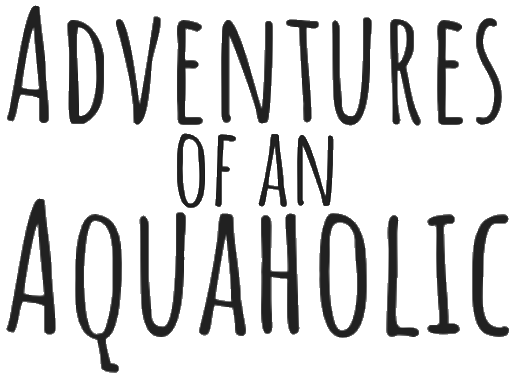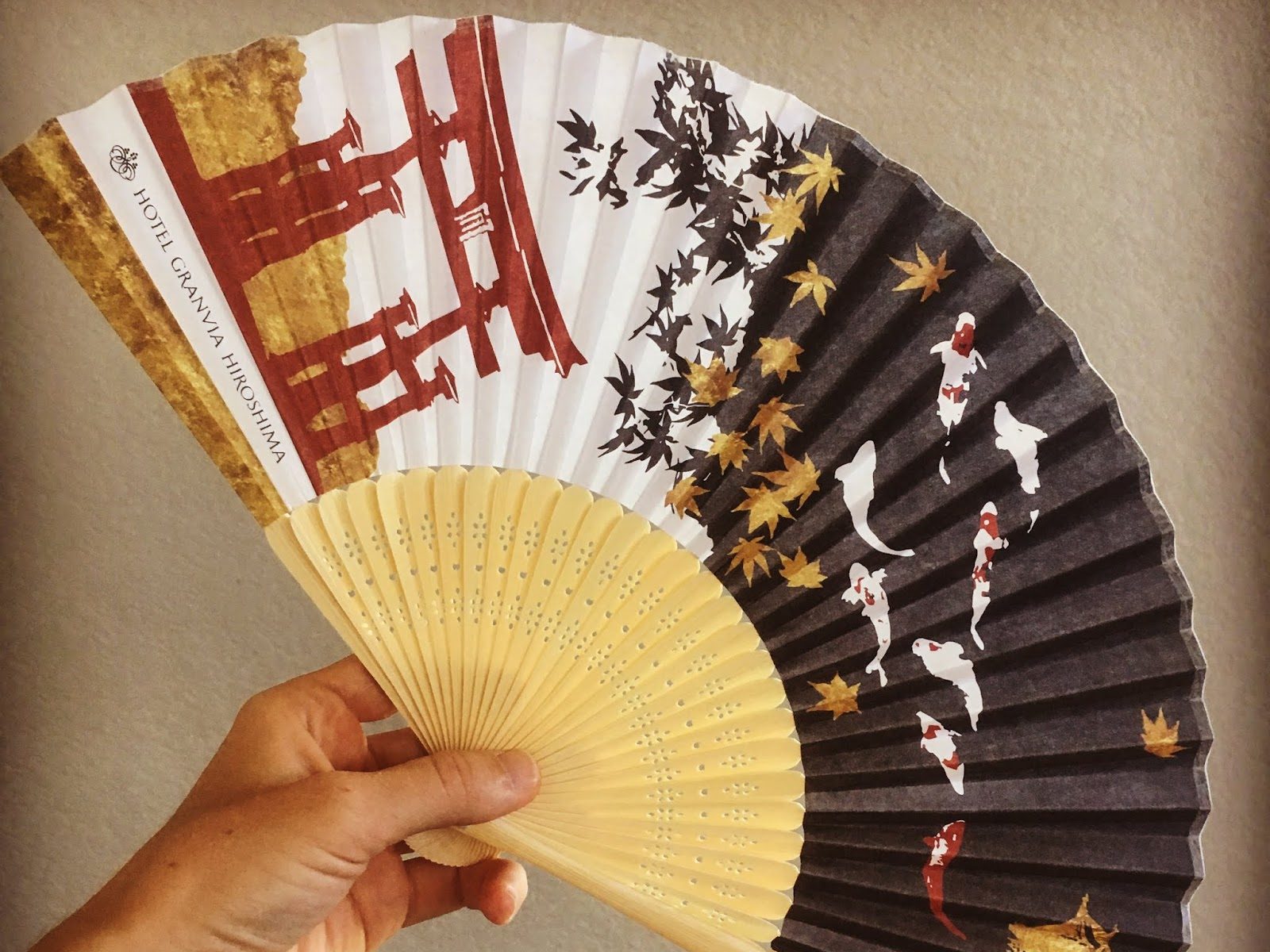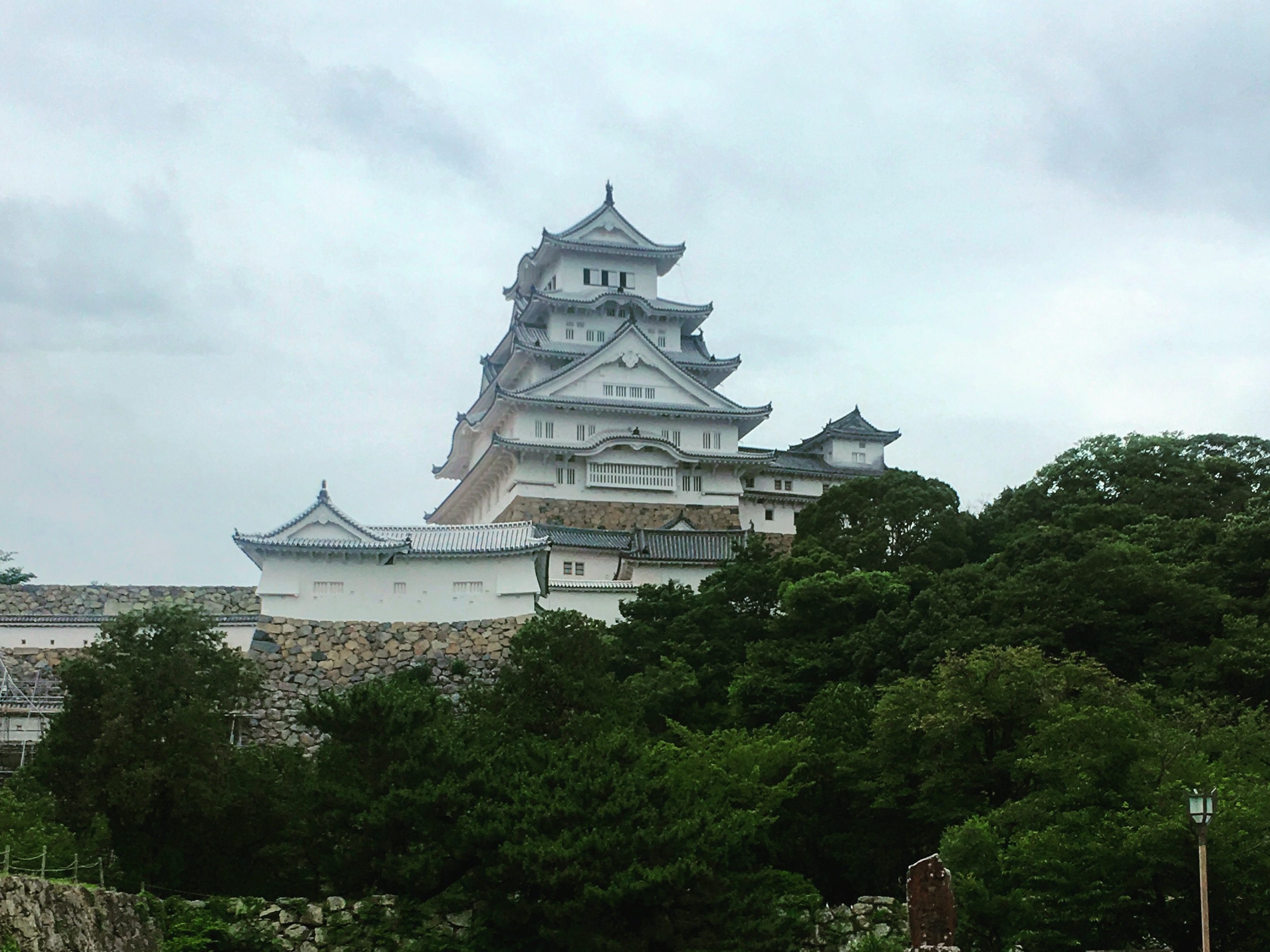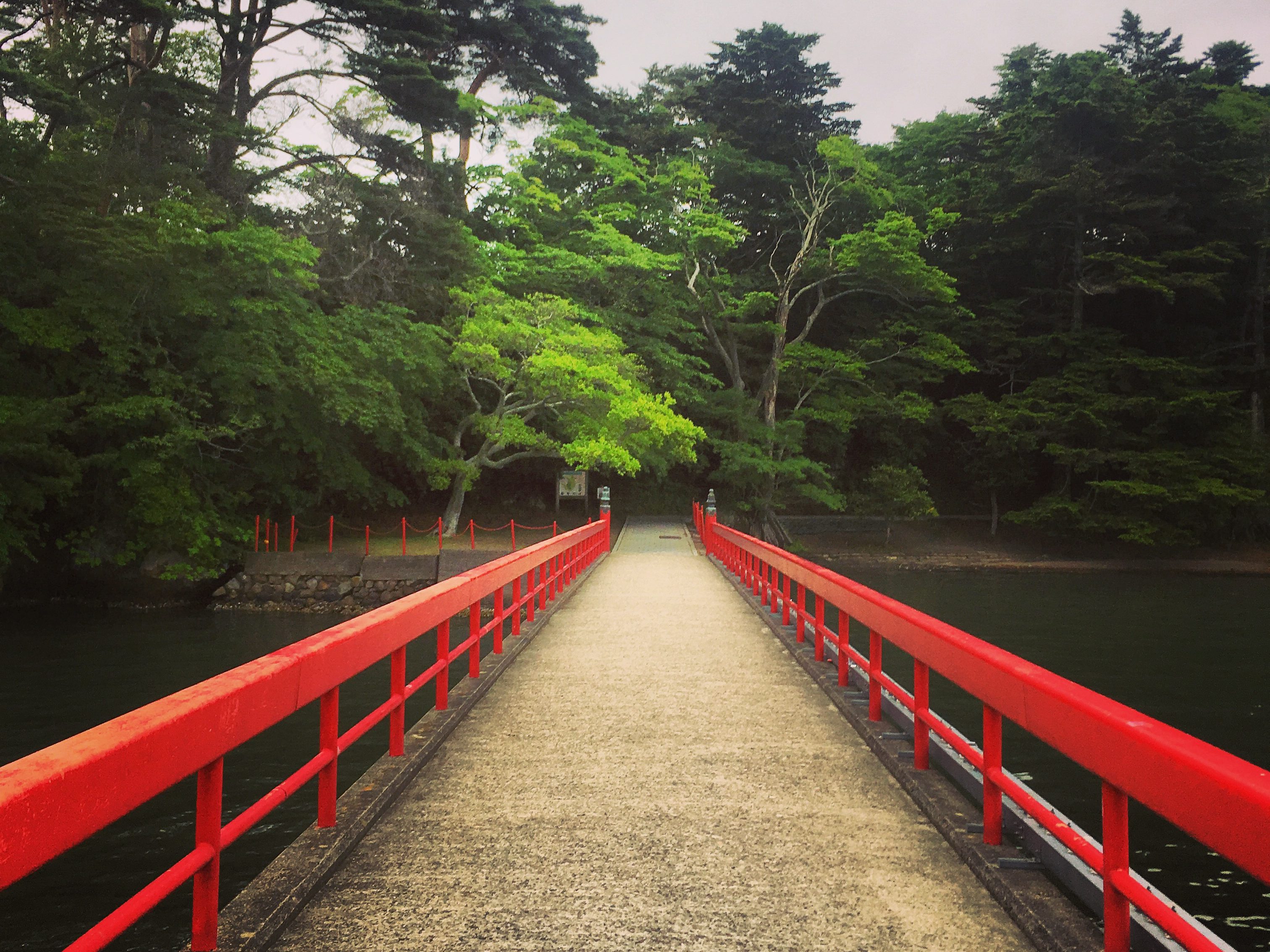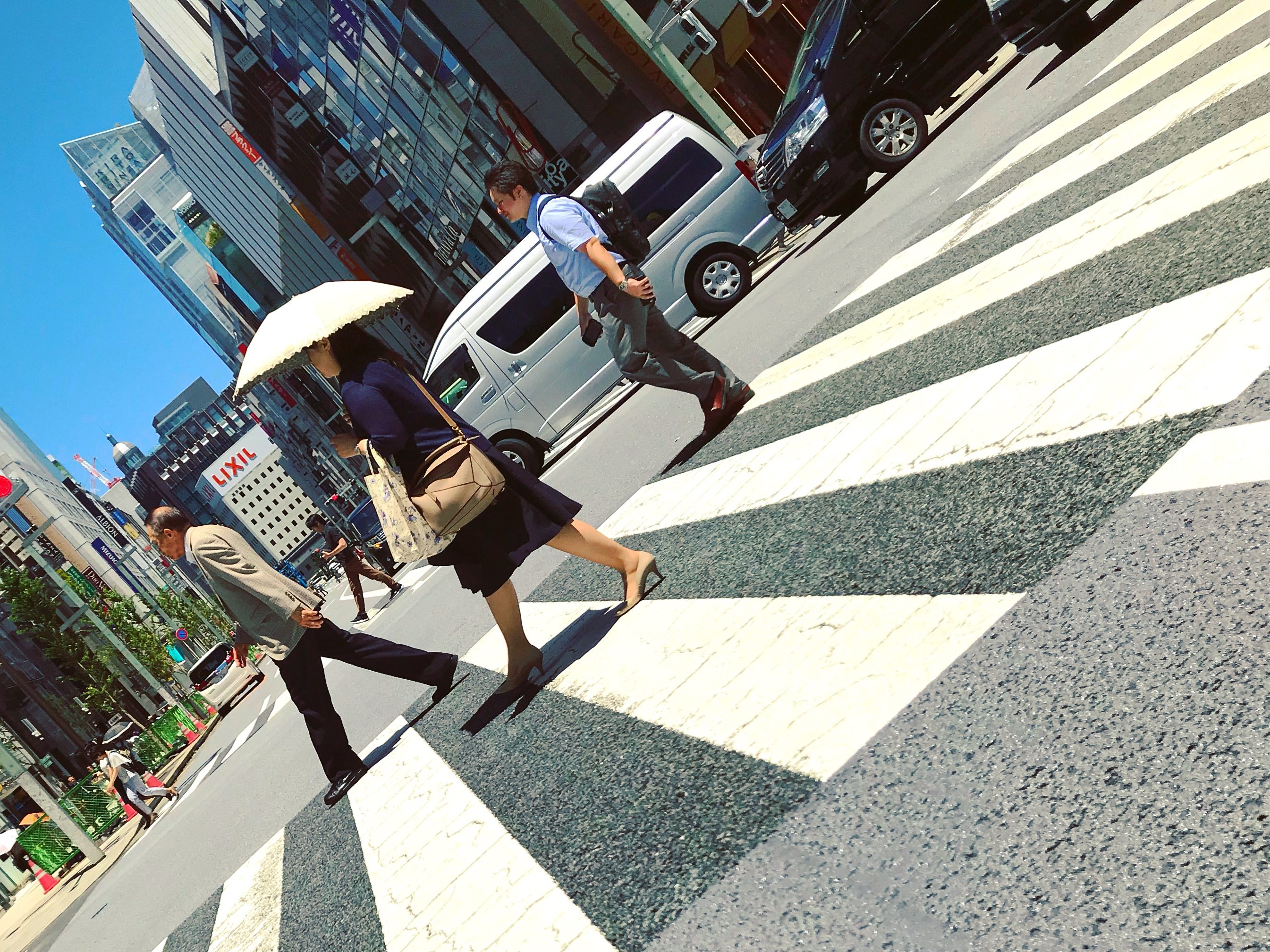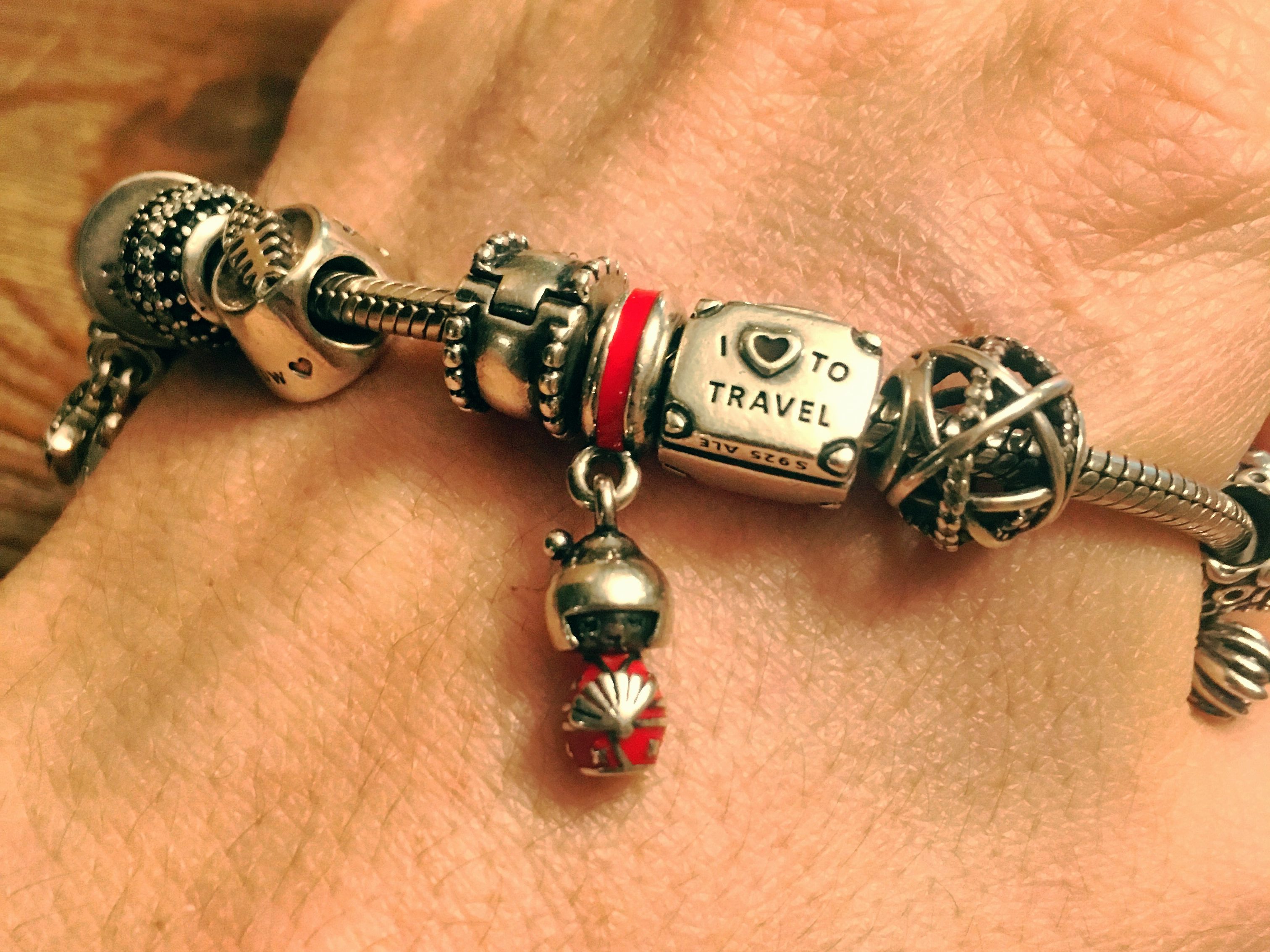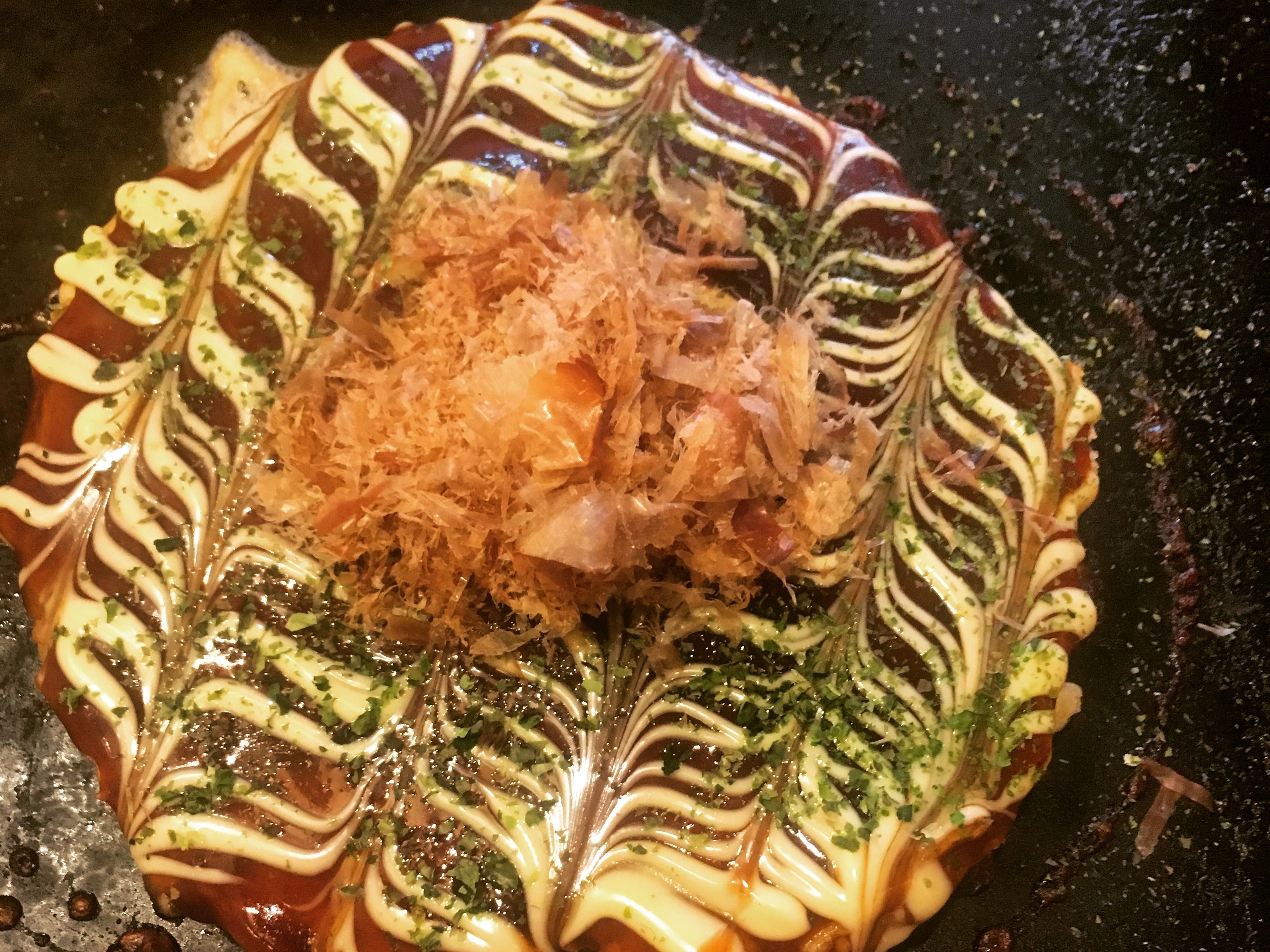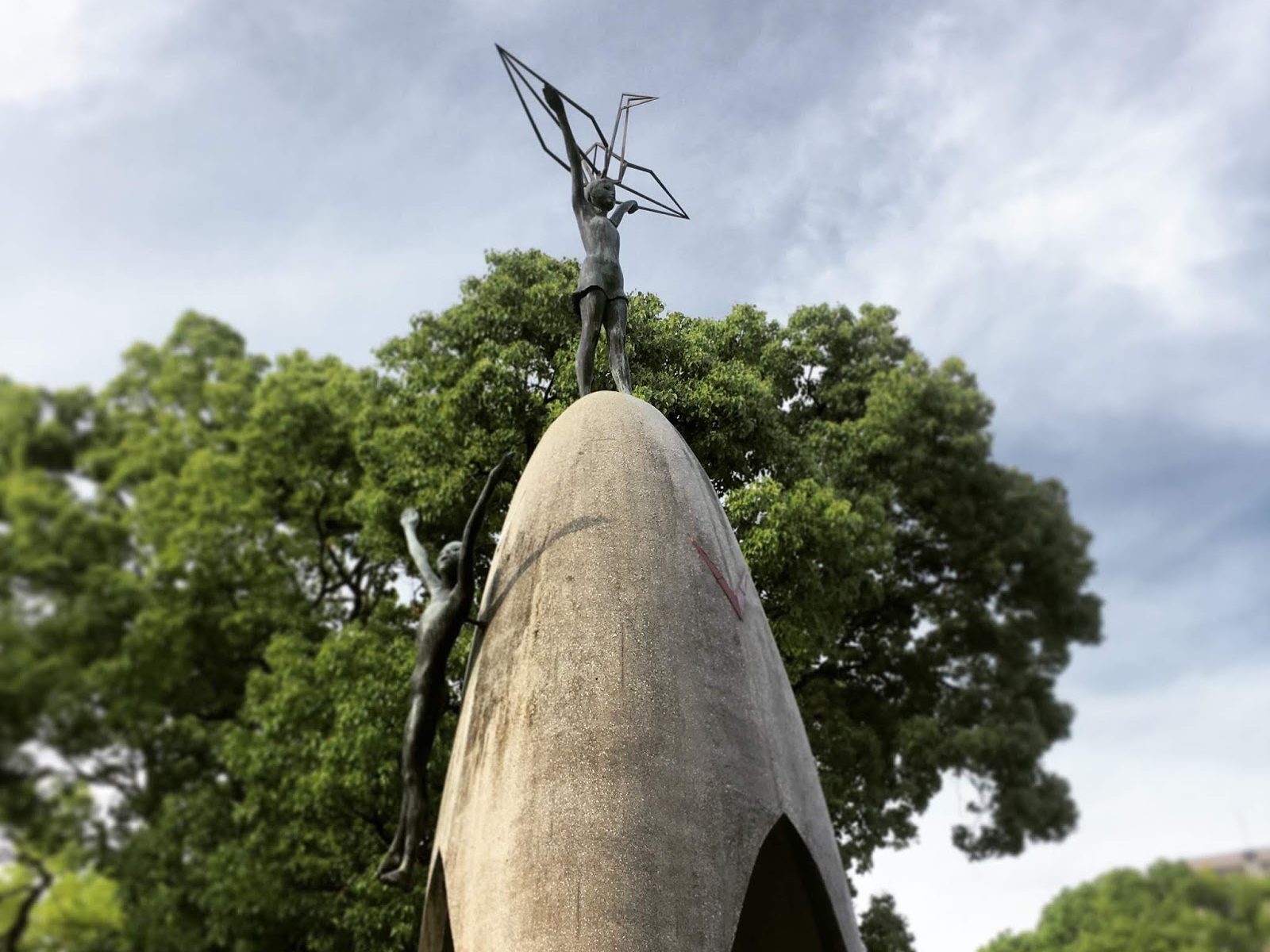
Japan Day 18 – Hiroshima
Fletch and I took our time in the morning. We knew it was going to be a heavy day, so we weren’t in any real hurry to get an early start and jam-pack as much as we could into our hours of daylight. When planning our trip, I had asked Fletch what he wanted to see and do in Japan. His only real request was that he wanted to see Hiroshima, and learn about the Japanese side of WWII. That had been on my list as well, and so our only goals for the city were to visit the Peace Memorial Museum and to walk the Peace Memorial Park where the Atomic Bomb Dome and several other memorials were erected.
Hiroshima as a whole was a very quiet and peaceful city. We had noticed that about Japan, that despite the population density and size of the cities, places were surprisingly quiet. Now that we were away from the excitement and chatter of the bulk of the tourists, the quiet was even more palpable. Hiroshima wasn’t even a small place, with a population of 1.2 million, but it did have the peaceful serenity of a much smaller city.
It was lunch by the time we were ready to go, and so we walked to the adjoining train station to see what we might find for food. I felt uncomfortably self-conscious that day, being an American. No one treated us any differently, or gave us a second glance, but I still felt embarrassed. My country demolished your city, in the worst atrocity ever committed in war, but here I am touring and sightseeing like it’s just another world’s largest ball of twine. I felt ashamed to be here.
Crowds and a few crying babies scared us away from some of the restaurant choices. Out of the remaining, the plastic pasta displays were the most enticing. There were dozens of different creative pasta dishes to choose from. We sat down and browsed the full menu, full of colorful photos. After days and cities of nothing but noodles and various fried foods, I was still craving something green and crunchy and rich in vitamins. I found a salmon carpaccio salad to go along with my veggie and squid pasta. The salad was minuscule, and contained only few lettuce leaves, but I savored every last one of them, thinking of the salmon as only an afterthought. Fletch did a shrimp and broccoli pasta in lobster sauce. Both dishes were good but Fletch’s pasta sauce was some of the best pasta sauce I’d ever tasted.
| Vegetable and Squid Pasta |
We found the Maple Loop Bus, or the Maipuru-pu as the Japanese phonetics spelled out. There were three different colored lines, all running around more or less the same tourist destinations, just in different directions. We decided to jump off at the museum first for our history lesson, before walking the park north to visit the memorials, ending with the Atomic Bomb Dome on the far north end.
It turned out that the main building of the museum was closed for renovations and earthquake proofing, but the east building was still open. We walked up to a large, glass, block of a building, and stopped in front to stare through the window at what might have at one point been a futuristic looking clock, part analog and part digital. The analog clock at the top of the tower showed the current time with two black hands, and the time that the atomic bomb dropped, permanently stopped, with grey hands. A digital display in the middle showed the number of days since the first dropping of the A-bomb: 26,621 days. An identical digital display on the bottom showed the number of days since the latest nuclear test: 295 days. The plaque read:
Peace “Watch” Tower
This Clock Tower displays panels with numbers and cogwheels. The first panel indicates the number of days since the A-bomb was dropped on Hiroshima. The lower panel indicates the number of days since the last nuclear test. When a nuclear test is conducted, the number of days will be reset to zero to enhance the strength of the protest from Hiroshima. The cogwheels below represent a virtual countdown which warns us that we are on the path leading towards the annihilation of humanity. The concept is: the cogwheel at the top rotates 100 times per minute, but it will spin faster if the earth shows signs of being in danger. If it reaches the immovable cogwheel at the bottom, the clock will automatically self-destruct. In order to stop the cogwheels from spinning, we must work toward abolishing all nuclear weapons and seek for an age of coexistence among humankind without dependance on military forces.
A sign printed out explained that the latest nuclear test had been by North Korea, who announced it had conducted an underground nuclear test on September 3, 2017.
| Peace “Watch” Tower |
Already feeling the weight of what monsters the human race could be, we entered the building in silence and purchased two tickets.
The hallway lead us to a big empty room, with a panoramic photo stretched along the entirety of the walls. We were looking at a black and white photo of the city of Hiroshima before the bomb. We entered the next room to find the same panoramic view of the city, only this time after the bomb. Nothing was left save for rubble and maybe the odd tree stump. You’ve all probably seen photos. Blowing those photos up to life size and pasting them over the walls of the room to create a full, panoramic view was seriously chilling.
In the next room a few people were sitting on blocks and silently watching an old-fashioned tv with a grainy video playing. An elderly gentleman was giving a video testimonial of what he remembered from that day. We sat and watched, a dozen or so interviews, one after another, each person’s story lasting around five minutes. Everyone came from such different walks of life, from businessmen to school teachers, but they all remembered the same thing: a great white flash before being knocked unconscious and coming to several minutes later, to a grey world covered in ash. One gentleman had drawn out his entire story in a flip chart, and showed his own drawings of how he was so badly burnt that he could hardly move. He found a friend of his who had the bottoms of his feet completely burned off, and no idea how to help him. The friend couldn’t walk of course, and he himself was too badly injured to even think of carrying him. You could tell by the way his voice trembled, even all these years later, how much it pained him, above even the physical pain, to not be able to help his friend. Finally his uncle and aunt walked past and he was able to call them over for help.
Many of the stories were about the interviewees having badly burnt and mangled bodies running at them, and not even being able to recognize them as their own relatives. We sat and watched every last interview until the video looped and we were back to the spot we had walked in on again.
We left the small viewing room, which was simple and like something you’d find in a outdated library, and entered a grand display room like something out of a trendy museum. An entire wall was covered in displays, and a massive marble table took up the majority of the room, with interactive displays inlaid every few feet. In the marble spaces between the displays, the solid surface came alive with an eerie holographic display of the bomb being dropped and going off, silently, over and over again.
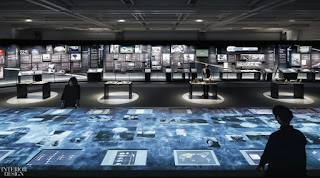 |
| Main display room in the Peace Memorial Museum (Photo property of: Interior Design) |
We parked ourselves in front of an empty display and began to soak up all the information. Screen after screen of information we read through, on everything: the development of of nuclear weapons, the decision process that went into choosing Hiroshima and Nagasaki, the extent of the destruction caused by the bomb, how the Japanese government didn’t even tell its nation that the attack had been nuclear until after the war, the research that went on for years and is still ongoing into the effect that the radiation had on people’s health, and lists of every nuclear test and accident that has occurred since that day that started it all. I was impressed because Fletch stood there and read through every last screen, with me reading over his shoulder. Had it been just me, I probably would have stopped reading and started skimming long before we reached the end. Not Fletch though, he made it through every last screen from beginning to end. I don’t know how long we stood at that screen reading everything; long enough to start shifting restlessly from foot to foot, moving to iron out kinks and aches, aches that were nothing compared to the graphic photos we were staring at. Long enough to feel sickened by the monsters we are.
When there was nothing left to read, we moved onto the displays scattered across the walls. There were models of the dome, before and after the bomb. Models of the scale of the bomb next to miniature people. Examples of tiles before and after the bomb. Examples of a glass Coke bottle before and after the bomb. A life-size model of the amount of uranium that was fissioned to create the nuclear explosion, less than one kilogram, a cube that was roughly one cubed inch in size. One little block that I could hold between my thumb and index finger, was enough to cause all that destruction. A portion of the wall was covered in enlarged photographs of people who made it to a hospital after the bomb, people so mangled and disfigured I had to look away.
| Amount of uranium that fissioned. |
It was 5:00 by the time we left the museum. It was a beautiful sunny day with blue skies, and the park was the picture of peace and quiet, with pretty green lawns, and trees, beautiful and alive. Hiroshima wanted primarily to send the message of peace far and wide, and this park was the epitome of just that. We slowly strolled the length of the park, silently letting the peace of today wash away the horror we had just been shown of yesterday. We strolled past the cenotaph, a curved concrete structure that held the names of every known person lost to the bomb. Then there was the Flame of Peace, set to burn until all the world’s nuclear weapons were destroyed, something I was now convinced would never happen.
| Cenotaph in Peace Memorial Park, Hiroshima |
| Flame of Peace |
Towards the end of the park we came upon a steep, three-legged mound, atop which stood a small girl with her arms outstretched and a paper crane stretching its wings out behind her, the Children’s Peace Monument. I knew this monument. I’d known it as long as I could remember. Growing up, I had three audiobooks that I used to listen to at bedtime, over and over again. I couldn’t even say how many times I listened to the story of Sadako and the Thousand Paper Cranes. Sadako Sasaki was exposed to radiation from the bomb at the age of 2, and 10 years later developed leukemia as a result. Based on an old legend, she believed that if she folded 1,000 paper cranes, she would be cured. Sadly, the disease claimed her life before she could accomplish her mission, and so her classmates finished the paper cranes for her and called for the construction of the monument in her honor, and in memory of all the children who lost their lives to the bomb. I had listened to that story so many times as a child, and now here I was standing in front of her monument.
| Children’s Peace Monument |
All the emotion I’d been holding in all day fell on me like a waterfall and I broke down.
This was the culmination of so many stories. Sadako’s story, the stories I’d heard from grandparents and great uncles growing up who fought in the war, a visit to Peleliu three years previous where a war memorial had been adorned in paper cranes, the weight of everything we had taken in on this lucid day.
An inscription on the monument read,
This is our cry. This is our prayer. For building peace in this world.
I didn’t think seeing the monument would be so overwhelmingly emotional, but with so many tears streaming relentlessly down my face, I had to walk away. I had wanted so much to see that memorial, but now it was too painful to look at it another moment. I walked away without visiting the glass display cases filled with the thousands and thousands of colorful paper cranes sent in by school children from all over the world every year. It was too much. Fletch offered me his shoulder in comfort.
We continued our walk and found a concrete dome with a bell hanging inside. The Bell of Peace, the plaque read. Followed by:
We dedicate this bell
As a symbol of Hiroshima Aspiration
Let all nuclear arms and wars be gone,
and the nations live in true peace!
May it ring to all corners of the earth
to meet the ear of every man,
for in it throb and palpitate
the hearts of its peace-loving donors.
So may you, too, friend,
step forward, and toll this bell for peace!
| The Bell of Peace |
Fletch and I stepped into the dome together, and jointly pulled back the thick, wooden pole suspended behind the bell. We released it and listened as the hollow “donggg,” vibrated and extended out in every direction over the otherwise quiet park. The quiet of the city made it easy to imagine the ring slowly extending out to every corner of the earth, spreading its plea for world peace.
At the end of the park, and the opposite side of the pond, sat the Atomic Bomb Dome. The empty shell of what was once the Industrial Promotion Hall, built by a Czech architect, stood almost directly under the spot where the bomb had detonated. Everyone inside died almost instantly, but the dome survived, an eerie reminder of what had occurred. By that point we didn’t feel the need to walk over for a closer look. I was emotionally spent and happy to catch this last glimpse from across the pond. We had fulfilled our goal for today, and educated ourselves on a pivotal day in human history.
| The Atomic Bomb Dome |
We boarded the bus home, but ended up jumping off a couple stops early to hit up a little oyster restaurant sitting on the river’s bank. Hiroshima was known for oysters. I never really was a fan of that particular shellfish until my first visit to New Orleans. It was there that a friend had asked for help finishing off a plate of too many she had ordered, and handed me a shell the size of a teacup. I have loved those oysters ever since. If anywhere could rival NOLA oysters, surely it was the area of food-centric Japan that specialized in oysters. I was excited to see if they were as good.
| Oyster Conclave Kaki-tei, Hiroshima (Photo credit: Fletch) |
We ordered drinks and a set meal to share. Dish after dish was presented, some with various raw oysters, some with grilled oysters, some with oyster cooked into various quiches or soups. A pot of boiled oysters was followed by oyster and red pepper bruschetta. I was so thrilled for the bell peppers. I’ve already mentioned that vegetables were few and far between. All the dishes were divine, and having an entire set meal based around a single ingredient was a culinary novelty. I have to say though, NOLA oysters still came out undefeated.
| Raw oysters prepared three different ways. |
We walked back to the train station, a pleasant 20 minute walk. Since it was our last night in the city, there was one last thing I wanted to do before finding our way back to the hotel. Hiroshima was food-famous, last and not least, for some sweets shaped like maple leaves. I’m usually happy to skip the sweets, but there had been a story in the manga I’d read the day before about the maple leaf sweets bringing happiness back to the lives of the people of Hiroshima after the bomb. After the day we’d just had, it seemed fitting to find some. Most of the sweets stores at the train station were already closed, and the few still open were sold out of everything save for a few remaining loaves of bread. After my fifth run into a shop with no success, Fletch pointed out a line coming out of a little shop and wrapping around the building. The sign advertised “cheese tarts.” Anything with a line of locals that long was surly worth waiting for. I stood in line while Fletch ran over to the nearest conbini to get drinks.
| Hiroshima at Dusk |
By the time Fletch and I found each other in front of the train station again, he told me we had to stop and watch what was unfolding for a moment. Amongst the crowd of faces, he pointed out a teenage boy, in trendy clothing, carefully wandering the crowd and scanning the faces around him. If he noticed a similar-aged girl, walking alone, he would single her out and approach, then ask something we couldn’t discern. Girl after girl either ignored him or turned him down. What was he asking? We stood and observed and opened our drinks. It soon became apparent that he had three friends he was working with, all behaving the same way. We called them: Gym Pants Guy, Blingy T-shirt Guy, Star Shirt Guy, and Black Pants Guy. We stood and watched, curiously, for a good long while. No one ever got lucky, but whatever they were up to had to work occasionally, because this seemed like a well-rehearsed routine. Fletch guessed that they were grifters.
When the game never came out successful, Fletch and I eventually grew bored of watching and walked back to the hotel, calling it a night.
